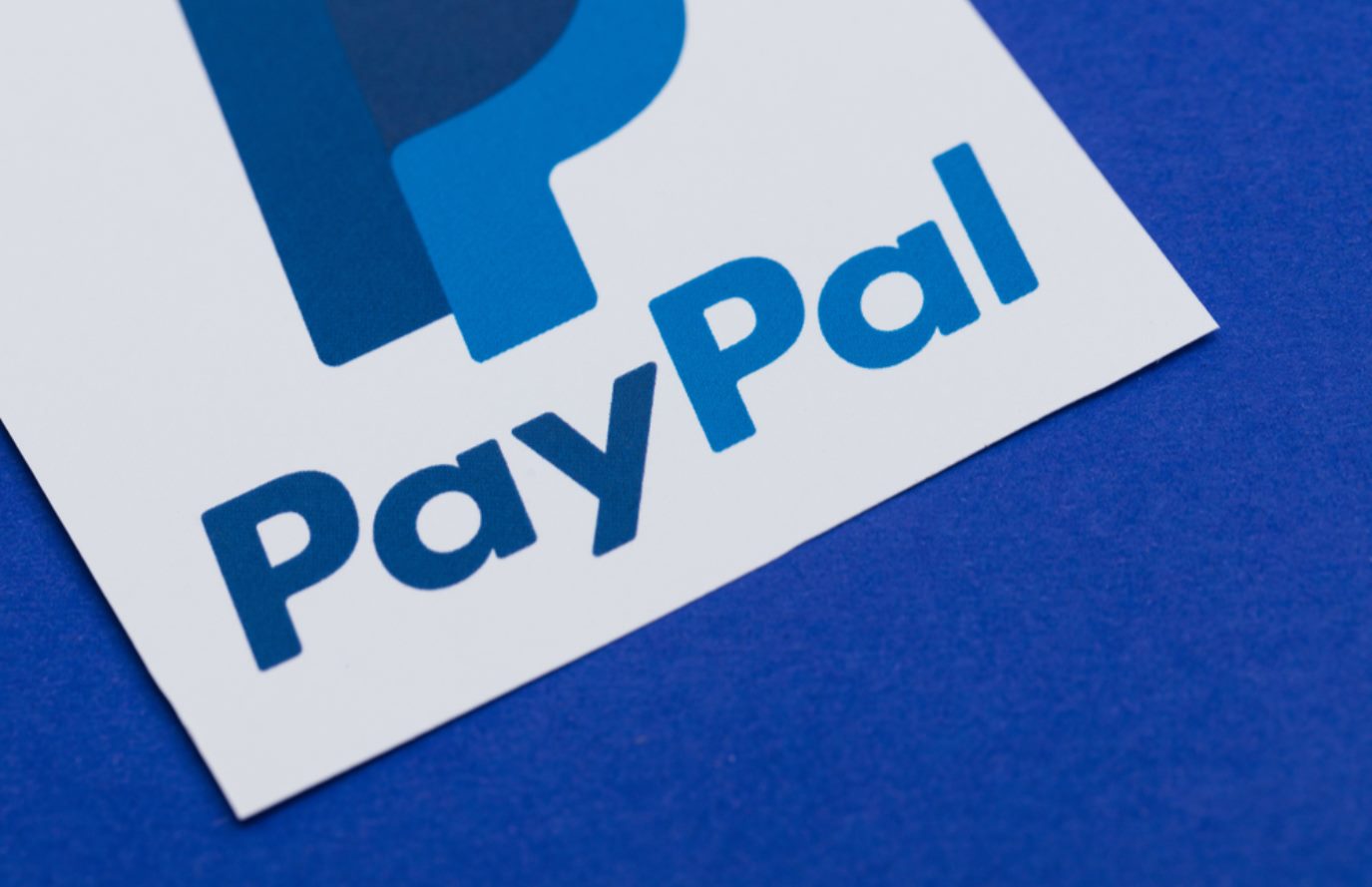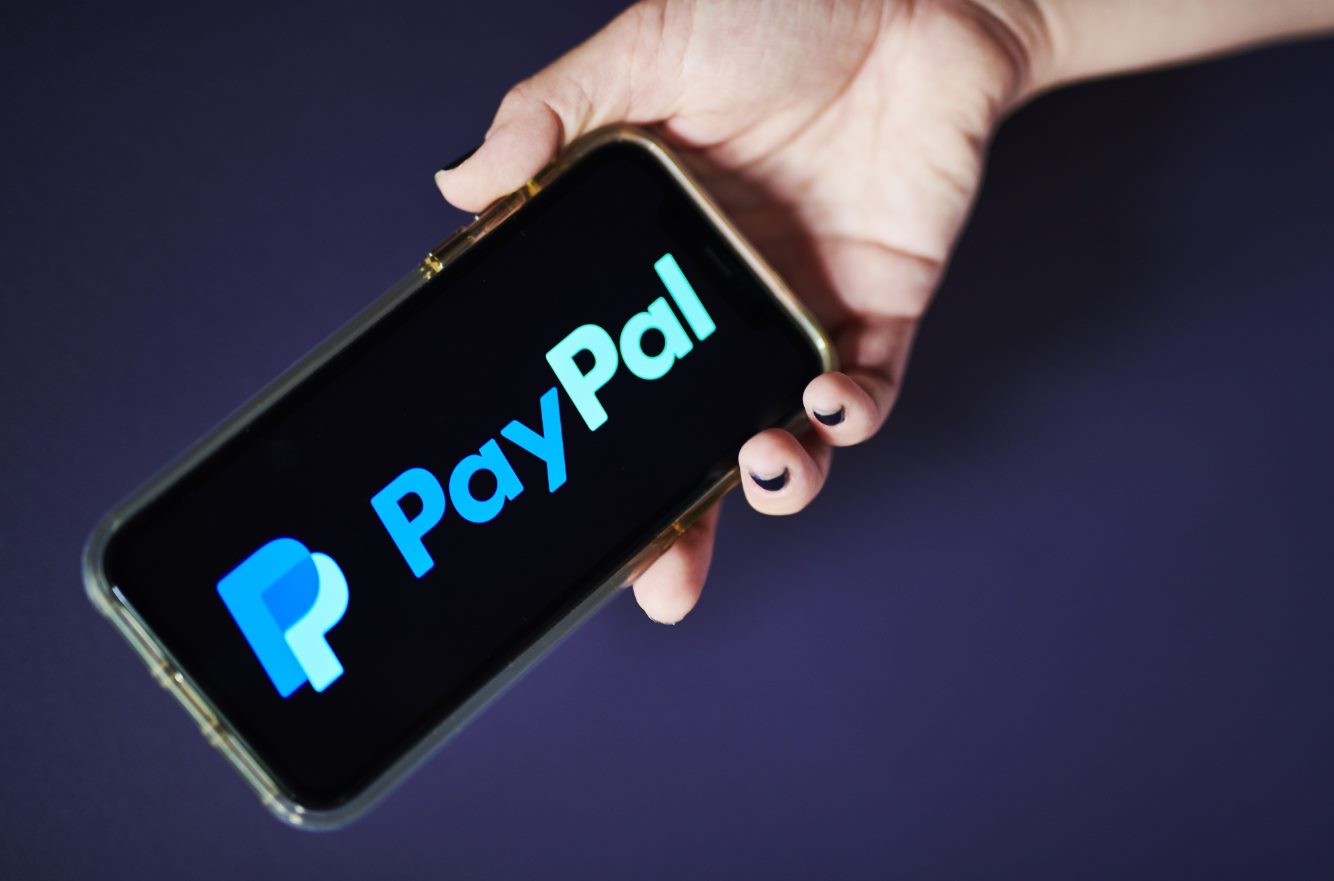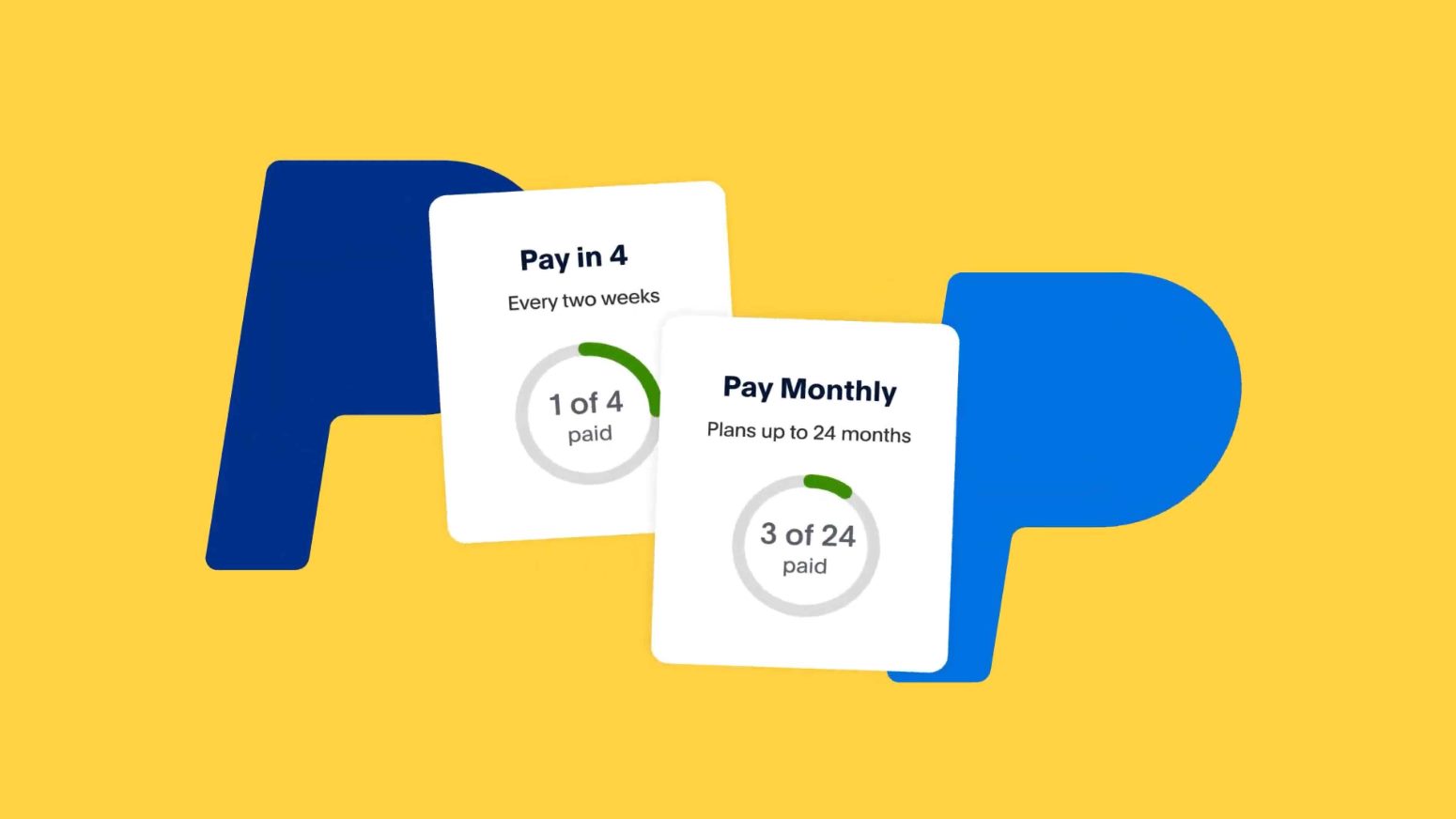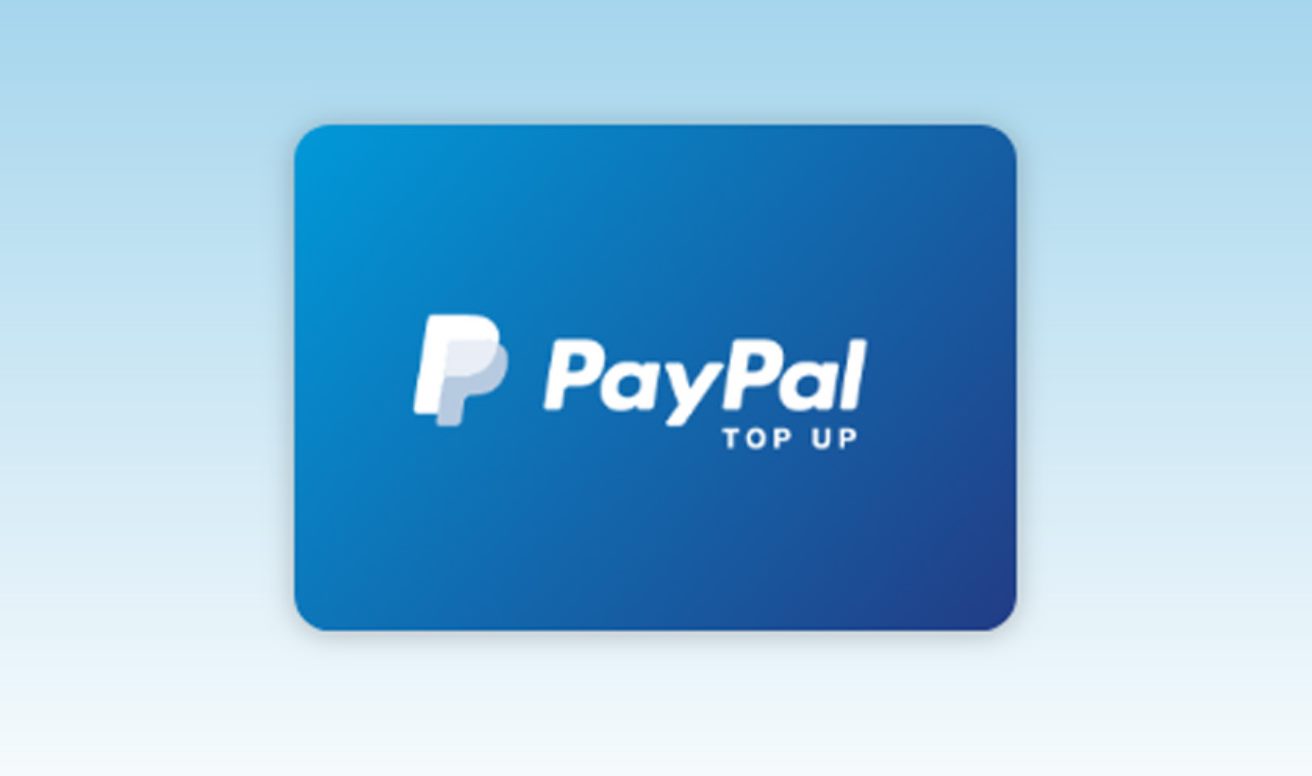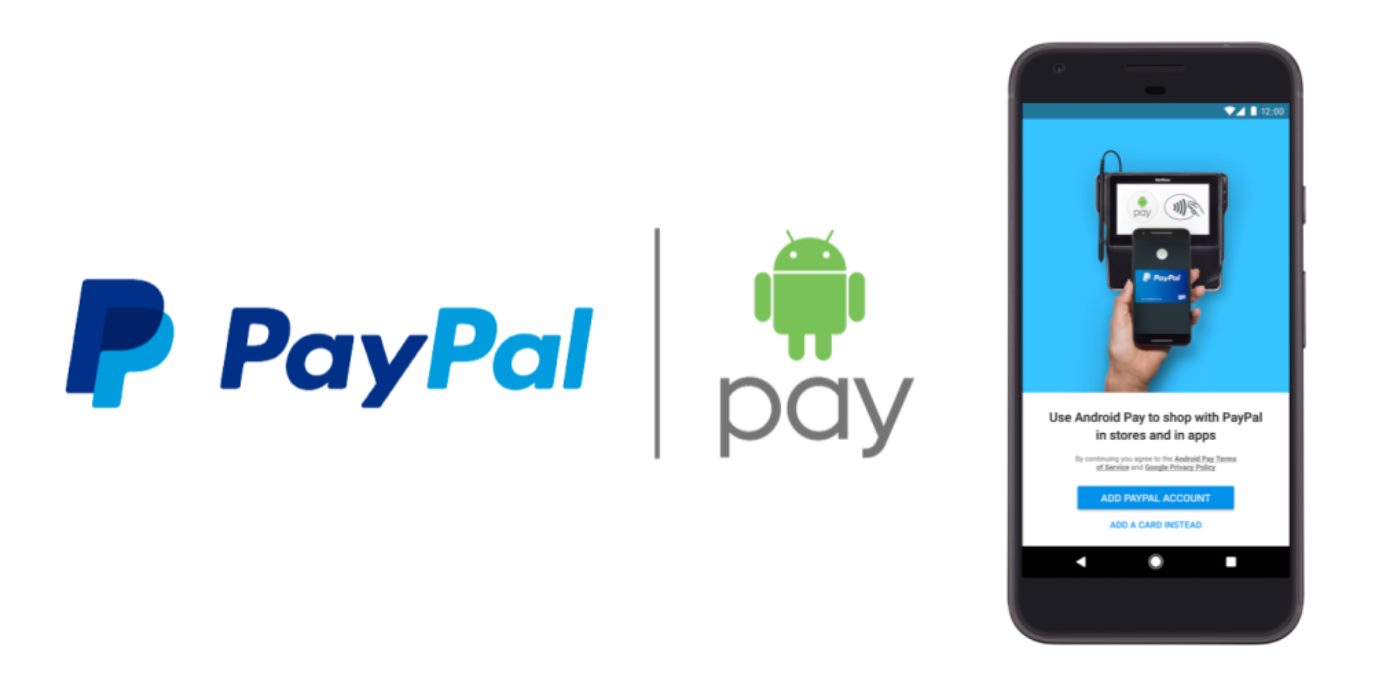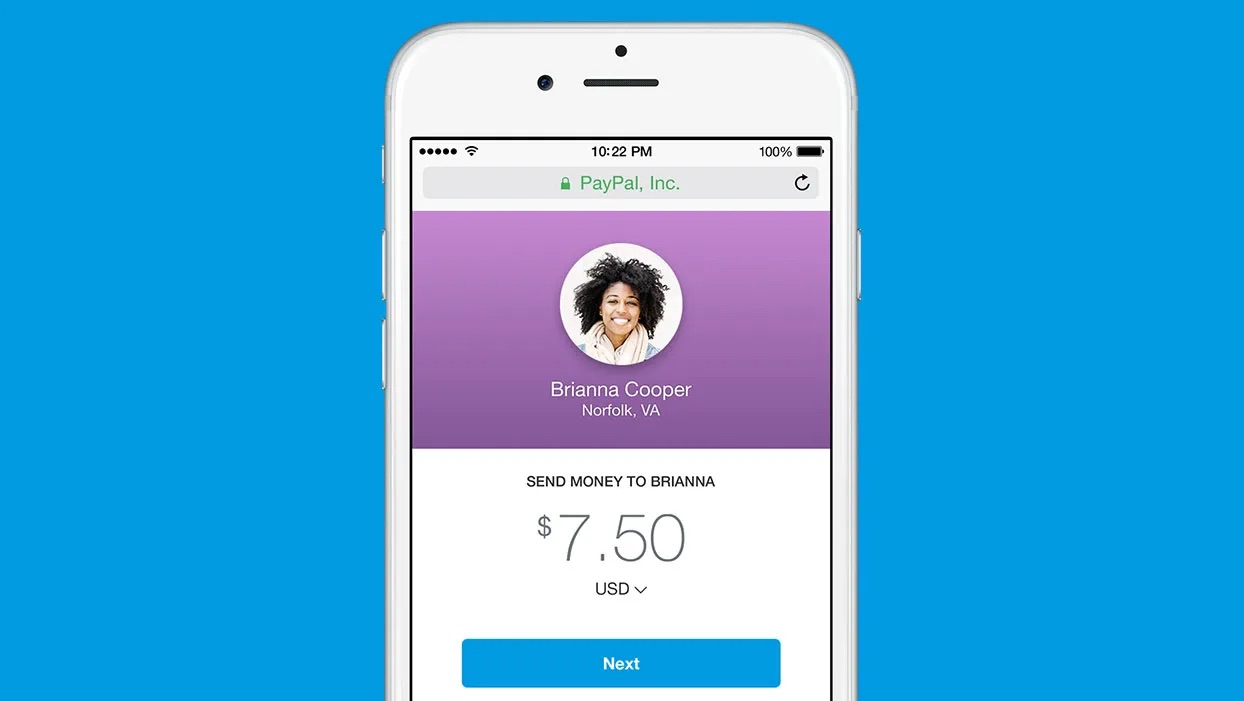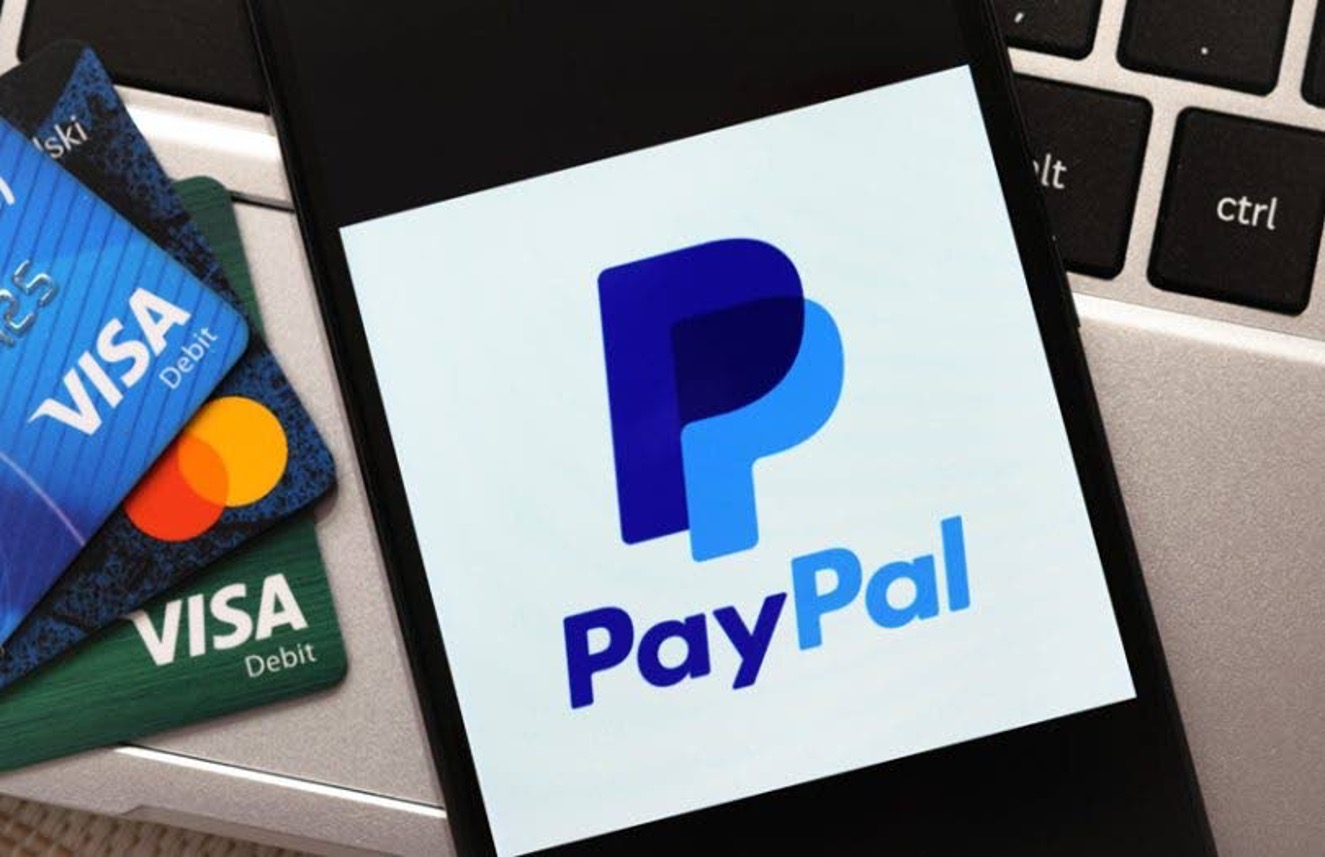Introduction
Welcome to the world of online payments! In today’s digital age, numerous platforms have emerged to make transactions more convenient and secure, and one such platform is PayPal. With over 325 million active users worldwide, PayPal has become a household name and a trusted solution for sending and receiving money online. Whether you’re a business owner, a nonprofit organization, or an individual looking for a hassle-free way to make online payments, PayPal offers a range of features and benefits to meet your needs.
In this article, we will explore what PayPal is, how it works, and why it has become such a popular payment platform. We will delve into the process of setting up a PayPal account, discuss the various fees and charges associated with using PayPal, and explore the buyer and seller protection mechanisms offered by the platform. Additionally, we will touch upon PayPal Business Solutions and how nonprofits can leverage PayPal for their fundraising efforts. Finally, we will take a look at some alternative payment platforms to provide you with a comprehensive understanding of the options available.
Whether you’re new to online payments or looking for a more efficient way to manage your transactions, PayPal offers a range of benefits that make it a preferred choice for many. From its easy setup process to its robust security measures, PayPal has earned its reputation as a reliable and user-friendly payment solution. So, let’s dive into the world of PayPal and discover how it can simplify your online transactions.
Overview of PayPal
PayPal is an online payment platform that allows individuals and businesses to send and receive money electronically. It was founded in 1998 and is now owned by eBay Inc. PayPal enables users to make secure transactions without the need for physical cash or credit cards, providing a convenient and efficient way to conduct online payments.
One of the key advantages of using PayPal is its widespread acceptance. It is accepted by millions of merchants around the globe, both online and offline. This means that whether you’re buying products from an e-commerce store or sending money to a friend, chances are they will have a PayPal account, making the transaction seamless and hassle-free.
Another notable feature of PayPal is its robust security measures. When you make a payment or receive funds through PayPal, your financial information is kept secure and private. PayPal utilizes advanced encryption technology and a fraud detection system to protect your sensitive data. Additionally, PayPal offers buyer and seller protection, which we will discuss in more detail later.
PayPal is not just limited to personal transactions. It also caters to businesses of all sizes. PayPal offers a range of business solutions, including merchant services, invoicing tools, and customizable payment options. This makes it an attractive choice for entrepreneurs and established businesses alike, as it provides a streamlined payment process and helps manage transactions efficiently.
With the rise of digital currencies, PayPal has also ventured into the cryptocurrency market. Users in select countries can now buy, sell, and hold cryptocurrencies like Bitcoin, Ethereum, and Litecoin directly within their PayPal accounts. This move has further expanded PayPal’s versatility and appeal, allowing users to explore different avenues of financial transactions.
Overall, PayPal has earned its reputation as a trusted and reliable online payment platform. With its ease of use, widespread acceptance, and robust security measures, it has become a preferred choice for individuals, businesses, and nonprofits alike. In the next section, we will delve into how exactly PayPal works and how you can set up your own PayPal account.
How Does PayPal Work?
Understanding how PayPal works is essential to fully utilize its benefits and features. At its core, PayPal acts as an intermediary between buyers and sellers, facilitating secure and convenient online transactions. Here’s how it works:
- Account Setup: To get started, you need to create a PayPal account. This is a simple process that requires you to provide your email address, create a password, and link your bank account or credit/debit card to your PayPal account. Once your account is set up, you can start sending and receiving money.
- Sending Money: When you want to send money, you can do so by entering the recipient’s email address or mobile number associated with their PayPal account. You then specify the amount you wish to send and select the funding source from your linked bank account or card. PayPal will securely transfer the funds to the recipient’s PayPal account, and they will be notified of the incoming payment.
- Receiving Money: Receiving money through PayPal is just as simple. Share your PayPal email address with the person or business sending you funds, and they can transfer the money directly to your PayPal account. The funds will appear in your account balance, and you can then choose to withdraw the funds to your linked bank account or use them for future online transactions.
- Online Shopping: PayPal is widely accepted by online merchants, making it a convenient payment option while shopping. When you check out at an online store, select PayPal as your payment method and log in to your PayPal account. Review the transaction details and confirm the payment. The merchant will receive the payment instantly, and your order will be processed.
- Security Measures: One of the key advantages of using PayPal is its robust security measures. When you make a payment, PayPal uses encryption technology to protect your financial information and keep it secure. PayPal also offers buyer protection, which allows you to file a dispute if there is an issue with your purchase, ensuring that you can shop with peace of mind.
Aside from these basic functions, PayPal offers additional features such as the ability to send invoices, request money from others, and set up recurring payments. These features make PayPal a versatile platform for personal and business transactions, providing convenience and flexibility.
Now that you have a better understanding of how PayPal works, let’s move on to the next section, where we will guide you through the process of setting up your own PayPal account.
Setting Up a PayPal Account
If you’re ready to start using PayPal for your online transactions, setting up an account is a simple and straightforward process. Here’s a step-by-step guide to help you get started:
- Visit the PayPal Website: Head to the official PayPal website (paypal.com) to begin the account setup process.
- Select Account Type: Choose the type of account you want to create. PayPal offers Personal, Business, and Nonprofit account options. Select the one that best suits your needs.
- Provide Required Information: Fill in the necessary details, including your name, email address, and password. Make sure to use a strong password that is difficult to guess but easy for you to remember.
- Link Your Bank Account or Card: To send and receive money through PayPal, you’ll need to link a bank account or credit/debit card to your account. This step is crucial for verifying your identity and enabling transactions.
- Confirm Your Email Address: PayPal will send a confirmation email to the address you provided during the signup process. Open the email and click on the verification link to confirm your email address.
- Complete Identity Verification (if required): Depending on your location and the type of account you’ve chosen, PayPal might require additional verification to ensure security. This may involve providing additional personal information or submitting documentation.
- Set Up Two-Factor Authentication (recommended): To enhance the security of your PayPal account, consider enabling two-factor authentication. This adds an extra layer of protection by requiring a unique access code in addition to your password when logging into your account.
- Start Using Your PayPal Account: Once your account is set up and verified, you can start using PayPal to send and receive money, shop online, and enjoy the various features and benefits the platform offers.
It’s important to note that while basic PayPal accounts are free to set up, certain transactions may incur fees. Be sure to familiarize yourself with PayPal’s fee structure to avoid any unexpected charges.
Now that you know how to set up your PayPal account, let’s explore the fees and charges associated with using PayPal in the next section.
PayPal Fees and Charges
When using PayPal for online transactions, it’s important to understand the fees and charges that may be associated with certain transactions. While creating a PayPal account and sending money to friends or family is generally free, there are fees for certain types of transactions. Here’s an overview of the main fees and charges you may encounter:
- Sending and Receiving Money: Sending money to friends or family within the same country is typically free if you use your PayPal balance or linked bank account. However, if you use a credit or debit card to fund the payment, a small fee may apply. Receiving money is usually free, but there is a standard transaction fee if you receive payments from customers or clients for goods or services.
- International Transactions: If you send or receive money internationally, there may be additional fees involved. PayPal charges a fee for currency conversion and a cross-border transaction fee, which is a percentage of the transaction amount. It’s important to review PayPal’s international fee structure to understand the costs before initiating international transactions.
- Selling on PayPal: If you use PayPal to receive payments for selling products or services, there are transaction fees associated with these sales. The fee structure varies depending on factors such as the country you’re in, the currency used, and the volume of sales. PayPal provides clear information on their website regarding the applicable fees so you can plan accordingly.
- Additional Services: PayPal offers additional services such as PayPal Here (card reader for in-person transactions), invoicing tools, and advanced business solutions. These services may have separate fees associated with their usage. It’s important to review the specific fees for these services if you plan to utilize them.
It’s worth noting that PayPal’s fee structure may change over time, so it’s recommended to regularly check their website or contact PayPal directly for the most up-to-date information on fees and charges.
While fees are an important consideration, it’s essential to weigh them against the convenience, security, and other benefits PayPal provides. Many users find that the ease of conducting online transactions and the added buyer and seller protection justify any associated fees.
In the next sections, we will explore PayPal’s buyer protection and seller protection mechanisms to understand how PayPal ensures safe and secure transactions for its users.
PayPal Buyer Protection
PayPal offers a robust Buyer Protection program, designed to safeguard the interests of buyers and provide them with added confidence when making online purchases. Whether you’re buying goods or services, PayPal’s Buyer Protection can help you resolve any issues or disputes that may arise. Here’s how PayPal’s Buyer Protection works:
Eligibility: To be eligible for Buyer Protection, the transaction must meet certain criteria. The item or service must be eligible for coverage, bought on an eligible platform, and paid for using PayPal. The transaction must also comply with PayPal’s policies, and any disputes must be filed within a specific timeframe.
Dispute Resolution: If you encounter a problem with a purchase, such as receiving an item that is significantly different from the seller’s description, or not receiving the item at all, you can file a dispute through PayPal’s Resolution Center. This initiates a process where PayPal works to mediate between you and the seller in an attempt to reach a fair resolution.
Refunds and Reimbursements: If the dispute is resolved in your favor, PayPal will facilitate a refund or reimbursement by reversing the transaction. The funds will be credited back to your PayPal account or the original payment source, depending on the situation. PayPal may also cover the return shipping costs in specific cases.
Documentation and Communication: To support your claim, PayPal may require you to provide relevant documentation, such as photographs, receipts, or correspondence with the seller. Clear communication with PayPal and timely responses to their inquiries are crucial to help expedite the dispute resolution process.
Terms and Limitations: It’s important to familiarize yourself with PayPal’s terms and conditions regarding Buyer Protection, as there may be certain limitations and exclusions. For example, certain types of transactions, such as purchases of digital goods or services, may have different coverage or may not be eligible for Buyer Protection.
PayPal’s Buyer Protection adds an extra layer of security and trust when making online purchases. However, it’s important to note that it’s always advisable to research the seller, read product descriptions and reviews, and exercise caution to minimize the chances of encountering issues in the first place.
In the next section, we will explore PayPal’s Seller Protection and how it benefits sellers using the PayPal platform.
PayPal Seller Protection
In addition to offering Buyer Protection, PayPal also provides Seller Protection to ensure that sellers are protected against fraudulent chargebacks and unauthorized transactions. This feature offers peace of mind to sellers conducting business through PayPal. Here’s an overview of how PayPal’s Seller Protection works:
Eligibility: To be eligible for Seller Protection, sellers must meet certain criteria. They need to ship the item to the address provided on the transaction details page, respond to customer inquiries promptly, and comply with PayPal’s policies. The transaction should not involve any prohibited items or services listed in PayPal’s terms and conditions.
Fraudulent Chargeback Protection: PayPal’s Seller Protection guards against fraudulent chargebacks, where a buyer falsely claims that they did not receive the item or that it was significantly different from the seller’s description. If a buyer files an unauthorized transaction claim or a chargeback for an eligible transaction, PayPal will investigate the case and provide protection to the seller, including coverage for the transaction amount and chargeback fees.
Unauthorized Payment Protection: Seller Protection also covers unauthorized payments made through PayPal. In cases where a payment is deemed unauthorized and the transaction is eligible for protection, PayPal will reimburse the seller for the full purchase amount and waive any associated chargeback fees.
Evidence and Documentation: In order to qualify for Seller Protection, sellers may be required to provide evidence and documentation, such as proof of shipment, delivery confirmation, or communication with the buyer. It’s important for sellers to keep detailed records of their transactions to support any potential claims.
Seller Performance Metrics: PayPal may take into account the seller’s performance metrics, such as their history of chargebacks, disputes, and overall transaction volume, when determining eligibility for Seller Protection. Maintaining a good track record by providing excellent customer service and promptly resolving any issues is crucial for maintaining Seller Protection coverage.
Please note that while Seller Protection provides added security, it’s important for sellers to take precautions and follow best practices when conducting business online. This includes accurately describing the items or services, providing clear terms and conditions, and promptly addressing customer inquiries and concerns.
Now that we have explored both Buyer Protection and Seller Protection, let’s move on to the next section, where we will discuss how PayPal offers tailored solutions to meet the needs of businesses.
PayPal Business Solutions
PayPal offers a range of tailored business solutions to help businesses of all sizes streamline their payment processes and manage transactions efficiently. Whether you’re a small business owner, a freelancer, or a large enterprise, PayPal provides a suite of tools and services designed to meet your specific business needs. Here are some key features of PayPal’s Business Solutions:
Merchant Services: PayPal enables businesses to accept payments from customers both online and in-person. With PayPal’s merchant services, you can integrate a payment button on your website, create customized checkout experiences, and accept payments from various channels, including credit cards, PayPal balances, and even contactless payments through PayPal Here.
Invoicing: PayPal’s invoicing tools make it easy for businesses to send professional invoices to their customers. You can create customizable invoices, track payments, and send automatic payment reminders to streamline your invoicing process. Invoices can be sent via email or shared as a link, making it convenient for both you and your customers.
Payment Gateways: PayPal integrates seamlessly with popular e-commerce platforms, allowing businesses to set up secure and efficient payment gateways. Whether you’re using Shopify, WooCommerce, or Magento, PayPal can be easily integrated to handle your customers’ transactions securely and provide a seamless checkout experience.
Business Loans and Financing: For eligible businesses, PayPal offers access to business loans and financing options through PayPal Working Capital. This service provides flexible funding solutions based on the business’s PayPal sales history, allowing you to invest in growth opportunities or manage cash flow as needed.
Analytics and Reporting: PayPal’s business solutions provide valuable insights through analytics and reporting tools. You can access transaction details, track sales trends, and generate customized reports to gain a deeper understanding of your business’s financial performance. Utilizing this data can help you make informed decisions and optimize your sales strategies.
Integration with Third-Party Tools: PayPal integrates with a wide range of third-party tools and platforms, allowing businesses to streamline their operations further. From accounting software to customer relationship management (CRM) platforms, PayPal’s integrations save time and effort by automating tasks and syncing data across multiple systems.
Whether you’re a small business looking to establish an online presence or a larger enterprise seeking efficient payment solutions, PayPal’s Business Solutions offer a range of features and services to help you thrive. It’s important to explore the specific tools available and determine which ones align with your unique business requirements.
Next, we’ll turn our attention to PayPal’s offerings for nonprofits and how they support fundraising efforts.
PayPal for Nonprofits
PayPal’s commitment to empowering businesses extends to nonprofit organizations as well. PayPal offers a range of features and services specifically designed to support nonprofits in their fundraising efforts and help them make a positive impact. Here’s an overview of how PayPal caters to the needs of nonprofit organizations:
Special Nonprofit Rates: PayPal offers discounted transaction rates for registered nonprofit organizations. This reduction in fees allows nonprofits to maximize their fundraising efforts and allocate more funds towards their charitable causes.
Donation Buttons: With PayPal’s donation buttons, nonprofits can easily embed buttons on their websites or social media platforms, allowing supporters to make contributions with just a few clicks. These customizable buttons can be tailored to specific fundraising campaigns and seamlessly integrated into the nonprofit’s online presence.
Recurring Donations: PayPal enables nonprofits to set up recurring donation options, allowing supporters to contribute on a regular basis. This feature is particularly useful for establishing steady funding streams and building long-term relationships with donors.
Fundraising Tools: PayPal provides various fundraising tools, including peer-to-peer fundraising capabilities. Nonprofits can set up campaigns where supporters can create their own fundraising pages and share them with their networks. This feature extends the reach of the nonprofit’s message and expands their donor base.
Event Planning and Ticketing: For nonprofits hosting fundraising events, PayPal offers event planning and ticketing solutions. Nonprofits can create event pages, sell tickets, and manage registrations, all within the PayPal platform. This streamlines the event management process and provides a seamless payment experience for attendees.
Financial Reporting: PayPal’s reporting and analytics tools provide nonprofits with valuable insights into their fundraising efforts. Nonprofits can easily track donations, generate financial reports, and gain a comprehensive understanding of supporter engagement. This data-driven approach helps nonprofits make informed decisions and evaluate the impact of their fundraising campaigns.
By leveraging PayPal’s nonprofit-focused features and services, organizations can streamline their fundraising processes, reach a wider audience, and ultimately make a greater impact with their charitable initiatives. It’s important for nonprofits to explore the specific solutions offered by PayPal and identify how they can best align with their fundraising goals and strategies.
Now that we’ve examined PayPal’s offerings for nonprofits, let’s explore some alternatives to PayPal in the next section.
PayPal Alternatives
While PayPal is a widely-used and trusted payment platform, there are several alternatives available that cater to different needs and preferences. Whether you’re looking for lower fees, specialized features, or specific regional coverage, here are some popular PayPal alternatives to consider:
Stripe: Stripe is a popular choice for e-commerce businesses. It offers an easy-to-integrate payment gateway, customizable checkout experiences, and robust developer tools. Stripe supports credit cards, digital wallets, and local payment methods, making it a versatile platform for online transactions.
Square: Square is known for its point-of-sale solutions, particularly for small businesses and service providers. With Square, you can accept payments in person through their card reader or online through their payment gateway. Square also offers additional services like invoicing, inventory management, and appointment scheduling.
Authorize.Net: Authorize.Net is a payment gateway known for its robust security features. It supports a wide range of payment options and offers advanced fraud detection tools. Popular among businesses of all sizes, Authorize.Net provides seamless integration with various e-commerce platforms and offers reliable support.
Google Pay: Google Pay is a digital wallet that allows users to make secure payments online, in stores, and within apps. It simplifies the checkout process and streamlines transactions across different Google services. Google Pay supports multiple payment methods, loyalty programs, and offers enhanced security features.
Amazon Pay: Amazon Pay is designed for businesses that want to offer their customers a familiar and trusted payment option. Customers can use their Amazon accounts to make purchases on external websites, making the checkout process smooth and seamless. Amazon Pay also provides fraud protection and multilingual support.
TransferWise: TransferWise is an international money transfer service that offers competitive exchange rates and low fees. It focuses on borderless transactions and provides users with local bank account details in multiple countries, allowing for convenient receipt of funds across borders.
Payoneer: Payoneer is a global payment platform that specializes in cross-border transactions. It offers multi-currency accounts, prepaid Mastercards, and provides services for freelancers, online sellers, and businesses looking for simplified international payments.
These are just a few examples of PayPal alternatives available in the market. When considering alternatives, it’s important to assess your specific needs, compare features, fees, and consider the regional coverage that aligns with your target audience. It’s also wise to review customer reviews and gather feedback from peers in your industry to make an informed decision.
Now that we’ve explored some PayPal alternatives, let’s wrap up the article.
Conclusion
In today’s digital landscape, PayPal has emerged as a leading online payment platform, providing individuals, businesses, and nonprofits with secure and convenient payment solutions. With its widespread acceptance, robust security measures, and user-friendly interface, PayPal has become a go-to choice for millions of users worldwide.
We began this article by introducing PayPal and highlighting its key features and benefits. We explored how PayPal works, from setting up an account to sending and receiving money securely. We also delved into PayPal’s fees and charges, understanding the costs associated with different types of transactions.
We then discussed how PayPal offers buyer protection and seller protection, ensuring safe and secure transactions for users. PayPal’s Buyer Protection provides a safety net for buyers, allowing them to dispute transactions and receive refunds in case of issues. On the other hand, Seller Protection protects sellers against fraudulent chargebacks and unauthorized payments, enhancing their confidence in conducting business through PayPal.
PayPal’s commitment to serving different types of users is evident in its offerings. We explored PayPal’s specialized solutions for businesses, including merchant services, invoicing tools, and business loans, empowering organizations to streamline their operations and drive growth. We also highlighted PayPal’s nonprofit-focused features, such as special rates, donation buttons, and fundraising tools, which enable nonprofits to make a positive impact and engage supporters effectively.
Lastly, we discussed alternatives to PayPal, recognizing that different businesses and individuals have unique requirements. We explored popular alternatives such as Stripe, Square, and Google Pay, providing readers with options to consider based on their specific needs and preferences.
Whether you’re an individual seeking a secure way to send money online, a business owner looking for streamlined payment solutions, or a nonprofit organization searching for effective fundraising tools, PayPal offers a range of features and services to meet your needs.
As technology continues to evolve and new payment platforms emerge, PayPal remains a trusted and reliable choice in the ever-changing landscape of online payments. Its commitment to security, convenience, and customer satisfaction makes PayPal a top contender in the digital payment realm.
So, why not explore PayPal and its offerings further to experience the benefits it can bring to your personal, business, or nonprofit endeavors?







